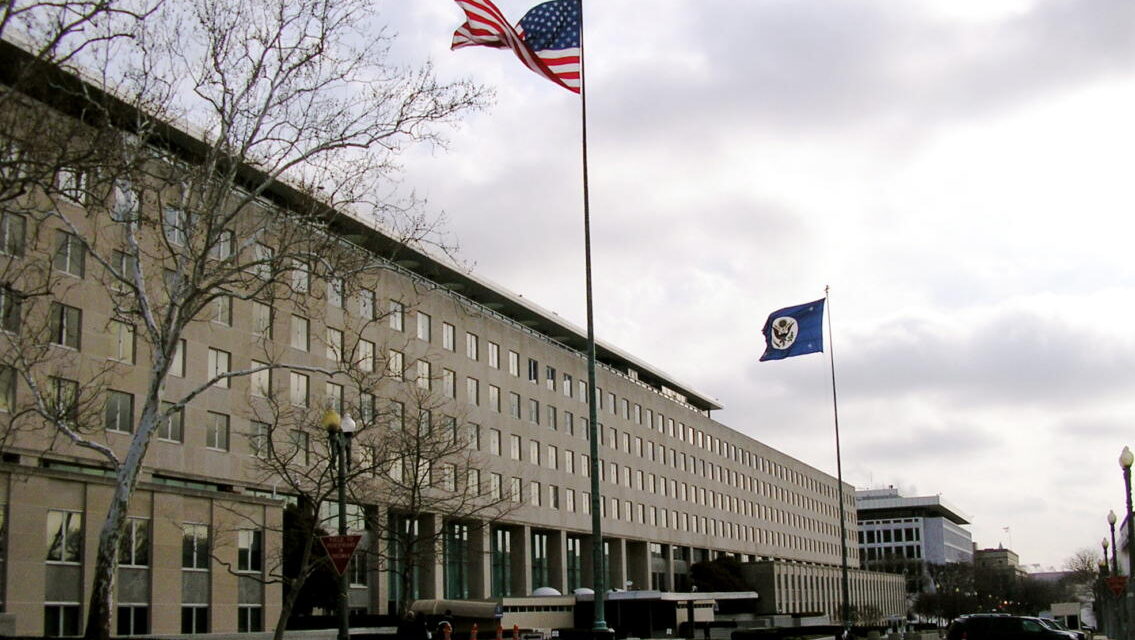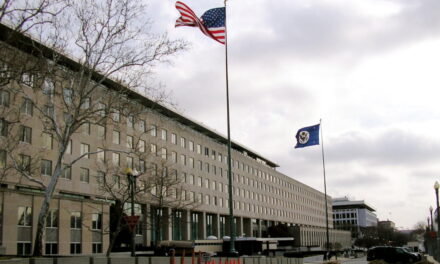[Part of a series of diaries how We The People are fooled and manipulated by our own Government proclaiming to be the greatest democracy on Planet Earth – so exceptional? – Oui]
Krishnan describes military applications of neuroscience research and emerging neurotechnology with relevance to the conduct of armed confl ict and law enforcement. This work builds upon literature by scholars such as Moreno and Giordano and fills an existing gap, not only in terms of reviewing available and future neurotechnologies and relevant applications, but by discussing how the military pursuit of these technologies fits into the overall strategic context.
- ○ This is Your Brain. This is Your Brain as a Weapon.
Cutting-edge neural technologies can erase traumatic
memories and read people's thoughts. They could
also become the 21st century's next battleground.
The first to sketch future neurowarfare by looking at its potentials as well as its inherent limitations, this book’s main theme is how military neuroscience will enhance and possibly transform both classical psychological operations and cyber warfare. Its core argument is that nonlethal strategies and tactics could become central to warfare in the first half of the twenty-first century. This creates both humanitarian opportunities in making war less bloody and burdensome as well as some unprecedented threats and dangers in terms of preserving freedom of thought and will usher in a coming age where minds can be
manipulated with great precision.
Armin Krishnan, East Carolina University, USA
○ Military Neuroscience and the Coming Age of Neurowarfare
Excerpts from papers presented at the ISAC-ISSS Conference in Austin, 14-16 November 2014.
Continued below the fold …
From Psyops to Neurowar: What Are the Dangers? By Armin Krishan
There is a scientific race for decoding the human brain. Current and near future technology will make it possible to not only merely influence the enemy’s mind and behavior, but to actually control it. Breakthroughs in neuroscience will enable new types of non-lethal weapons for precise behavioral manipulation, for example through behavior-altering neurotropic drugs, through remote electromagnetic brain monitoring and stimulation, through acoustic weapons beaming voices directly into enemy heads, and even through holographic projections and other `complex battlefield illusions.’ Within ten years soldiers could be equipped with transcranial magnetic stimulation devices or brain-computer interfaces, which would make it possible for their commanders to steer their emotions and to control their thoughts. This paper will discuss how the emerging sixth domain of warfare (the mind) is likely to transform military operations and profoundly change how wars are conducted. It is argued that military operations will be increasingly centered on achieving desired psychological effects, which will, on the positive side, reduce the need for physical destruction and killing. At the same time, `neuroweapons’ will also create new and unprecedented dangers, resulting from misuse and proliferation, which will need to be addressed through development of a concept of `neurosecurity’ that will be outlined.
Neuroscience is currently one of the fastest growing areas of science in the United States. It is an interdisciplinary field that seeks to connect and integrate “calculus, general biology, genetics, physiology, molecular biology, general chemistry, organic chemistry, biochemistry, physics, behavioral psychology, cognitive psychology, perceptual psychology, philosophy, computer theory, and research design.” It is inevitable that neuroscience research will impact on national security in complex ways in the next decades, which has already been the subject of a 2008 Defense Intelligence Agency sponsored study by the National Research Council. Advances in neuroscience might even trigger a neurotechnology arms race, as nations that could leverage neurotechnology better than others could gain a decisive advantage in warfare. This paper argues that new methods of influencing the brain and the central nervous system and thereby mental capacity, emotion, and thought could become central to future military strategy and the conduct of war, conflict, and economic competition. While `neuroweapons’ and `neurowarfare may still sound like science fiction or something that might only arrive in a very distant future, it is notable that neuroweapons are neither in principle technologically impossible, nor do they necessarily require technologies not yet in existence. They are in essence weapons that target the brain and the central nervous system. Depending on the precise definition of the term neuroweapon one could even argue that some primitive versions of them may already exist, such as the commercially available Myotron, which overloads the central nervous system through direct contact and thereby jams brain signals that control voluntary muscle movements.
Various neuropharmalogical drugs that impact on mental capacity and behavior are currently being researched by defense establishments around the world for possible usage in combat scenarios, amongst them modafinil, oxytocin, and propranolol. Monitoring or manipulating the brain and central nervous system remotely can be done with existing technologies such as EEG or fNIRS headsets, radio-frequency waves/ microwaves or pulsed ultrasound precisely targeted at specific areas of the brain. Considering recent investments and advances in neuroscience by many major countries, especially in areas such as brain stimulation and brain-computer interfaces, neuroweapons and neurowarfare could emerge already in the decade of 2015 to 2025. Furthermore, the potential consequences of mapping and decoding the brain could be more grave than any other scientific breakthrough in human history since it could affect the very concept of free will and individual autonomy on which liberal democratic society is based. Addressing the dangers that come with the future development and proliferation of neuroweapons and resulting neurowarfare will require a comprehensive approach towards `neurosecurity’ that can minimize the dangers, which will be outlined below …
A Symbolic Politics Theory of War By Stuart J. Kaufman
Abstract:Recent research on prejudice and cognitive psychology demonstrates the immense power of symbolic predispositions (SYPs)–people’s values and biases–in driving individual and group behavior. Additionally, research on terror management theory has demonstrated how
physical threat drives people to be more aggressive, ruthless and nationalistic. Combined, these three strands of psychological theory can be used to build a symbolic politics theory of war that offers persuasive answers to a wide range of questions. This includes variation in international conflict and cooperation across time and space; why “enduring rivalries” cause most international conflict; why ethnic violence is common among some groups but not others; how to understand the democratic peace; and how to think about who the actors in international relations are. At the same time, these insights explain how SYPs–biases–are the basis for most disagreements among IR theorists, and how competing realist, liberal and constructivist approaches can be reconciled by sorting out when the insights of each approach are accurate.
ThreatAnother influence of prejudice is on threat perceptions: people are more likely to perceive a threat from a group if they hold negative stereotypes about that group, especially if the outgroup is seen as lower in status. 28 Thus, for example, a major reason why the Bush Administration was able to persuade Americans in the aftermath of the 9/11 attacks that Iraq was an imminent threat was that most Americans already had a stereotype of Saddam Hussein as aggressive and dangerous. Pre-existing prejudice did much of Bush’s persuasive work for him.
Threat, furthermore, comes in many forms. First, since ingroup favoritism leads to discrimination against the outgroup, group dynamics can lead to “realistic group conflict” over access to resources. 29 In other cases, such as opposition to affirmative action in the U.S., the outgroup is seen as a threat to traditional values such as hard work, resulting in “symbolic threat”. 30 In yet other cases, what is at stake is status, as denial of respect to a traditional leader, or a verbal insult to the ingroup, can result in strong and even violent reactions against the outgroup. 31 These threats are most likely to be detected by traditionalists who are particularly intolerant of difference. Multiple studies have shown that all three kinds of threat, which I will call collectively “social threats,” are significant in affecting attitudes toward outgroups. 32
Those effects are powerful. A perceived social threat–whether a threat to power, wealth, values or status–raises the salience of group identity for the threatened group, and at the same time increases hostility and prejudice. 33 A key implication of this logic is that while tangible interests such as wealth matter, their defense is simply another symbolic predisposition, no more important than the defense of intangible values such as status or ideological beliefs.
When a threat concerns people’s physical safety, the effect on political attitudes is especially powerful. According to studies of “terror management theory,” priming people to have thoughts of their own mortality in the back of their minds drives political attitudes toward
conservatism and ethnocentrism. People become more respectful of their own national and religious symbols, more favorable to those who praise such values, more unfavorable toward those with different values of any sort, and more punitive toward moral transgressors. At the same time, people become more physically aggressive toward those who differ politically, and less concerned with incidental harm to innocents. 34 In sum, when they are worried about death, people become more nationalistic, ruthless and intolerant.One result is that people who are anxious about death also become vastly more likely to support a nationalist leader like George W. Bush and his policies, as one study dramatically showed . 35 In this experiment, some participants were asked to think about watching television, and then asked whom they supported in the 2004 presidential contest; others were asked to think about death, and then asked for their political views. The study was done in New Jersey, a liberal state, so those who first thought about TV expressed their baseline views, backing Kerry over Bush by 57% to 13%. However, those who had been thinking about death preferred Bush over Kerry by 46% to 20%. Background thoughts about death caused support for Bush to go up by more than 30%, and support for Kerry to go down even more. 36
…
Applying these insights to any sort of politics, however, requires making the jump from individual psychology to social behavior. Any political psychology, in short, requires a sociology. Political scientists rarely make the connection, but in fact sociologists have fairly
well-developed answers to the puzzle in two related theoretical traditions: framing theory and social mobilization theory. 40 Framing theory focuses on leaders’ use of frames as a way to define political issues–and proposed policy responses–in ways that resonate with the audience’s symbolic predispositions. A key insight of this approach is that the credibility of the leader him- or herself is a significant independent variable: a resonant frame has no political impact without a credible leader to articulate it. Mobilization theory adds that to move from even a focused public opinion to any political action requires organization, whether formal or informal, in either case built on social networks that must be responsive to the leader. This explains how one can have war–ethnic war, for example–when at least one side lacks a state: a variety of social networks can be leveraged to turn a group into a political or even a military actor. 41
The Democratic PeaceA symbolic politics explanation of the democratic peace follows from this last point. Democracies would be expected to be hostile toward non-democracies because the latter are inherently symbolic threats: they threaten democratic values by challenging them. The U.S. is
likely to be particularly reactive to such threats, because its national identity is based primarily on those values rather than on ethnic nationalism. On the other hand, democracies–especially in the context of the Cold War–would tend to see a fellow democracy as part of a common ingroup: not only inherently non-threatening, but one of “us,” due the psychological benefit of the doubt that common ingroup membership affords. After four decades of the Cold War, this common ingroup identity was well-enough established that it outlived the context of the rivalry with Communism that had created it.A symbolist argument would also second and expand on Owen’s point about liberal values, and combine it with constructivist logic to explain the contemporary power of the international norm against aggression. Discourses create norms, but the norms are only accepted to the extent that they resonate with existing symbolic predispositions. Modern democracies, of course, only work if their populations accept liberal values such as the rule of law and nonviolent conflict management–that is, if their people are symbolically predisposed to accept a norm of nonaggression. Thus people in democracies embrace the international norm of nonaggression because it resonates with the symbolic predispositions that democracies cultivate for domestic interactions; autocrats reject the norm as a principle for their own behavior, and ignore it when they can.
ConclusionFor both international relations actors and international relations scholars, the key differences between realists, liberals and nationalists are their symbolic predispositions and threat perceptions. Leaders with cosmopolitan values behaves as liberals would expect; leaders with Machiavellian value clusters such as social dominance orientation behave as realists would expect; and leaders with nationalist values seek status rather than wealth or power, potentially behaving in more conflictual ways even than the Machiavellian realists. IR theorists tend to project their own orientations onto statesmen, so cosmopolitan liberals expect a great deal of international cooperation, while suspicious Machiavellian scholars expect leaders to behave as they themselves do, defecting in iterated prisoners’ dilemma-type games because they do not expect cooperation to be reciprocated.
The first step in building a sensible international relations theory is therefore to put aside our own biases, and recognize that leaders do in fact vary in their orientations. Some leaders are cosmopolitans, some are Machiavellians, and some are nationalists (and some combine these orientations), so they should be expected to behave differently when confronted with the same incentive structures. As the dual systems theory of decision-making affirms, these deep-seated symbolic predispositions drive behavior to a much greater degree than rationalists will admit. Even strategic behavior is a function primarily of the SYPs decision-makers bring to the situation: their propensity to trust potential rivals, their inclination to seek power either as a means to security or as an assertion of status, and soon.






